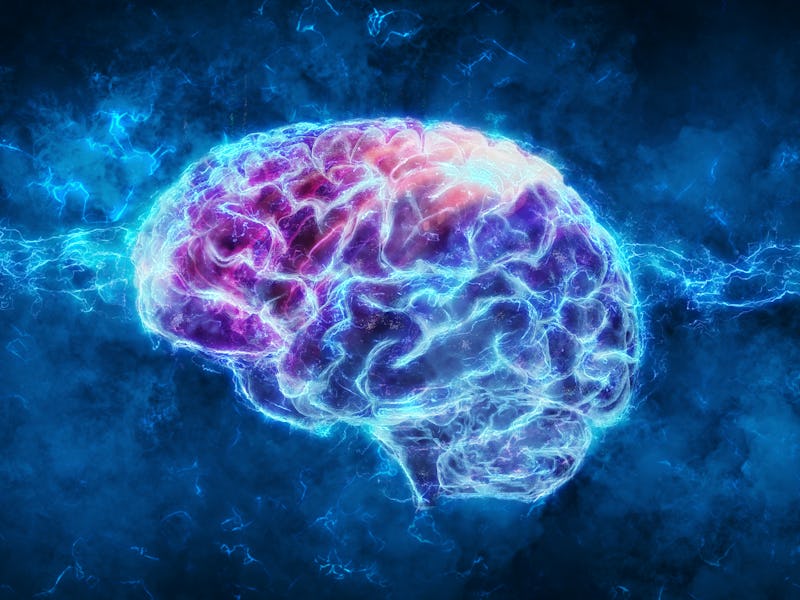Neuralink event: what to know about Elon Musk's highly-anticipated reveal
Neuralink is set to demo a crucial advance this week. Here's what you need to know about the human-brain linkup firm's plans.

Neuralink, Elon Musk's human-brain linkup firm, will hold a livestreamed event this week – and it's expected to feature a demonstration of the brain's neurons firing in real-time.
The secretive firm has been relatively quiet since its first public event in July 2019, when Musk and his team explained how the firm plans to use chips to link human brains up to computers. In July 2020, Musk revealed that the company was planning a second event for Friday, August 28. He also reiterated the company's mission statement: "If you can’t beat 'em, join 'em."
On Tuesday, Musk revealed more details about the event via his Twitter page. The event is set to feature a "live webcast of a working Neuralink device," giving the public its first glimpse of the device in action. The stream is scheduled to take place on Friday, August 28 at 3 p.m. Pacific time, or 12 p.m. Eastern time.
The motto hints at one of Musk's biggest goals with Neuralink. While it's currently focused on creating chips that could help medical patients, Musk has spoken before about his fear that artificial intelligence could one day outsmart humanity. Neuralink, Musk reasons, could help humans more effectively communicate with these smarter systems, and develop a symbiotic relationship with machines.
"It’s important that Neuralink solves this problem sooner rather than later, because the point at which we have digital superintelligence, that’s when we pass the singularity and things become just very uncertain," Musk said in a November 2019 interview.
It's an ambitious goal, but Musk has hinted that Friday's event will be a more grounded affair. That doesn't mean there won't be surprises in store, however, and Musk's comments suggest it could offer something spectacular.
Elon Musk.
What has Neuralink developed? – At the 2019 event, the team unveiled Neuralink's N1 chip. It measures four millimeters by four, sits in a sealed cylinder, and has 1,024 electrodes that can detect activity from the brain's neurons. Each electrode measures five microns thick, and sits 60 microns away from those neurons. This is a huge advance from existing interfaces, the company said. For example, similar chips used now to treat people with Parkinson's have just 10 electrodes.
Here's how it might work: Each person would have four of the chips, connected with a device near the ear, enabling them to control a smartphone or computer with their brain. At the 2019 event, Neuralink said it would start clinical trials in people with quadriplegia due to C1-C4 spinal cord injury by the end of 2020.
The team will use a robot to insert the chips. This robot will make a two-millimeter incision, dilate it to eight millimeters, place the chip in and glue the opening shut. The surgery is expected to take less than an hour.
What do we know about Friday's event? – Based on last year's jamboree, Friday's reveal could provide more information about these human trials. Musk has also teased that the event will feature a demonstration of the brain's neurons firing in real-time.
The event is also set to show the second-generation version of the robot unveiled last year. Musk noted via Twitter that it's "still far from LASIK [eye surgery], but could get pretty close in a few years."
Musk has been gradually ratcheting up the hype around this Neuralink event. In February, before he announced the July 2020 update, Musk told a Twitter user that they should "wait until you see the next version" compared to what was presented in July 2019, describing the new version as "awesome."
In a May 2020 discussion about Neuralink, Musk wrote that "reality is getting weird fast." And on July 18, Musk put out a call for engineers that have solved "hard problems with phones / wearables" to join the team.
On July 30, Musk responded to a Twitter post about the brain's 86 billion neurons. He explained that, while some neurons fire several times per second, others may go minutes without firing. This leads to a "very wide timing distribution."
He also claimed that Neuralink would demo this capability at Friday's event:
"Will show neurons firing in real-time on August 28th. The matrix in the matrix."
Musk also responded to a question about whether the company has plans to do the same at the spinal cord level:
"Yes, should be possible to create a neural shunt from motor cortex to microcontrollers in muscle groups & restore movement even if someone has a fully severed spinal cord. First part has already been demonstrated with Utah array, but not as an outpatient device."
The Utah Array uses 256 electrodes, and has been used to treat people with epilepsy. In February, Musk compared it to a "medieval torture device."
How do I watch Neuralink's next event? – Musk has confirmed that the Friday event will be livestreamed at 3 p.m. Pacific time. Details about where the livestream will take place, or how followers can tune in, have yet to be revealed.
Last year's event was held at the California Academy of Sciences’ Morrison Planetarium. The firm's YouTube channel hosted a livestream of the launch event, enabling fans from around the world to watch. It's possible the firm follows a similar approach with Friday's event, but anything is possible prior to final confirmation.
This article was originally published on